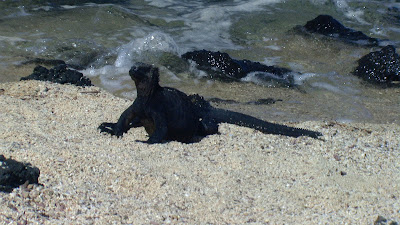Wednesday 28 May 2008 - Charles Darwin Foundation, Santa Cruz
The Darwin Station is the working Galapagos based branch of the international, non-profit Charles Darwin Foundation. Established in 1959, the Darwin Station works closely with the Galapagos National Park Service protecting the Galapagos Islands and Galapagos Marine Reserve.
Its primary function is to conduct scientific operation, research and assists other researchers within the Galapagos National Park and Galapagos Marine Reserve and also works providing environmental education to communities and schools within the islands, and to tourists visiting the Galapagos Islands. The Darwin Station has developed the curriculum for Galapagos Guides including the study of the Island's natural history, conservation and preservation of the islands and visitors can see the Tortoise breeding and rearing project at work.
There are numerous enclosures where young tortoises are bread. They are protected in enclosures with others of the same age. 
The other enclosure which caught every one's attention contained numerous other Galapagos tortoises.
Because of the delicate eco-system visitors are requested not to touch the animals, keep to designated paths and respect the animals and their protective enclosures. It's a shame John didn't see this sign until after he had broken EVERY RULE!!
We were lucky to catch two of them mating. Or so we thought!
The two caught below on film were actually two males! In fact there were no females in the enclosure. If you look closely you'll also note that the active male has got the wrong end of the other!
There were quite a few gasps of disbelief from the Japanese crowd on the other side who showed enthusiastic interest regardless!
The interesting part is that you can appreciate the concave and convex portions of the shells which fit together to form a suction hold - usually with a female - but it seems to work with two blokes as well. Not sure Nat Geo will pick up this footage for prime time!!
Following the tour we walked back through the township of Puerto Ayora to the jetty where waiting zodiacs took were to take us back to our boat. But not before I got held up by a local protest march. I wasn't permitted to cross the road before they had passed. Consequently I missed the boat! John returned in a zodiac with driver before long, but not without rolling his eyes! I wasn't the last time that I would be last! But hey! I'm taking the time to look around!
We sail overnight to our next islands. All I can say is 'iguanas'!!!
Labels: Galapagos Islands










